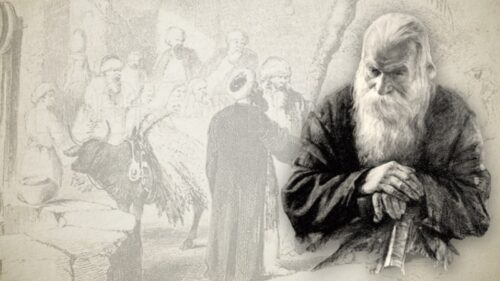-
What Is A Reformed Baptist?
According to the Founders Ministries, Tom Hicks serves as the Senior Pastor of First Baptist Church of Clinton, LA. He also serves on the board of directors for Covenant Baptist Theological Seminary and is an adjunct professor of historical theology for the Institute of Reformed Baptist Studies. I was recently asked to give a response to his article entitled “What is a Reformed Baptist”. I submit the following, believing it may be of help to others who are examining the differences between the Reformed and Particular Baptists. Tom Hicks writes:
-
A Comparison Between The Covenantalism Of Moderate And High (Hyper) Calvinism
Based on the chart presented in R. C. Sproul's book, "What Is Reformed Theology", Jared Smith demonstrates the difference between the covenantalism of Moderate and High (Hyper) Calvinists.
-
The Origin Of The Reformed Baptist Movement In America
How often do we hear the Reformed Baptists (RB) lay claim to the historic legacy of the Particular Baptists (PB), as if the two groups are one and the same? The English RB's lay claim to this heritage based on their requisition of historic PB chapels and the imposition of 'reforms' they have made to the churches. The American RB's lay claim to it based on their perceived oneness with the seventeenth century PB's, responsible for drawing up the 1689 Confession. Since the RB's are 'confessional', subscribing to the 1689 as the standard statement around which their movement is solidified, so it is assumed the PB's have always been 'confessional', subscribing to the same statement for the same reason. Henceforth, if the PB's were 1689…
-
3 The Origin of Eldership
In our previous studies, I have set out my understanding of the term elder—that it is an unofficial title of honor given to men and women, who by virtue of their age and experience, are sought after for their wisdom and influence by the younger members of society. That this is the basic meaning of the Hebrew and Greek terms, together with the universally accepted use of the term in every village and province around the world, cannot be disputed. It is only among certain Christian denominations the meaning has been changed to include an official title of appointment representing one and the same office as bishop/pastor. I believe this is an abuse of the term which has led to erroneous views of church governance.
-
2 Identifying Biblical Eldership
If a plurality of elders is the scriptural mode for church governance, as asserted by the Reformed Baptists, then every church falling short of this practice is in error. And a serious error it is, for the Reformed Baptists have made this issue a leading point of doctrine. Their biblical thesis for a plural eldership hinges on four propositions: First, church officers were chosen from the congregation at which time they became ‘elders’ (whether it be teaching or ruling elders). Second, the pattern recorded in the New Testament always points to each church having a plurality of elders. Third, this scriptural pattern is paramount to an apostolic prescription that is binding on each church—ideally, every congregation is responsible to appoint a plural eldership. Fourth, the…
-
1 An Introduction To Plural Eldership
During the 1950’s, a resurgence of Presbyterian theology greatly influenced a number of Baptist ministers. At that time, a revision was made on how Baptist churches should function. Drawing from the Presbyterian teachings on church polity, it was advocated that each congregation should be served by a plurality of elders and deacons. Elders would be responsible for the spiritual welfare of the church; deacons would be responsible for the physical upkeep of the church. As this concept was developed, two camps of plural eldership emerged:






